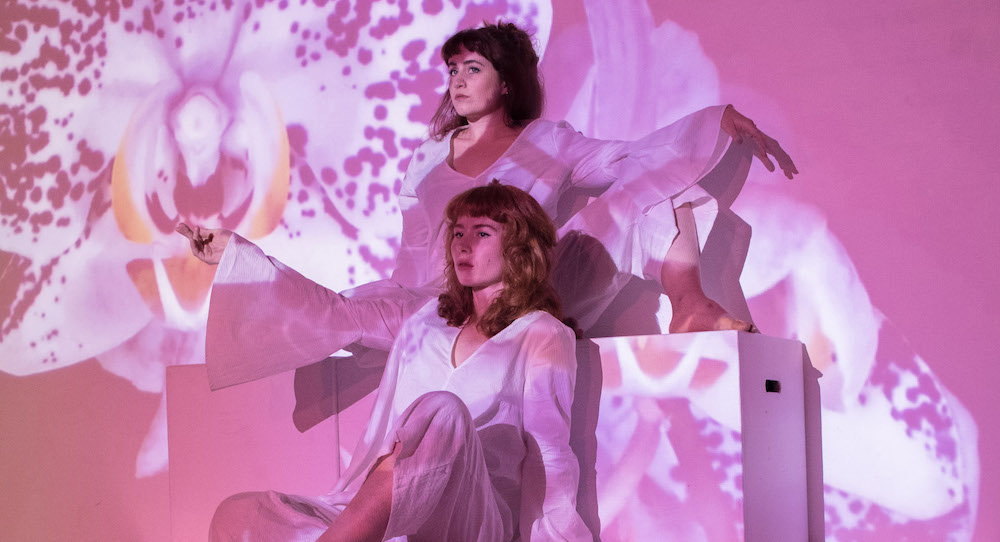Bondi Pavilion Gallery Space, Sydney.
16 July 2019.
Emma Harrison, independent dance artist and choreographer, has teamed up with Maddy McWilliam, to remount her work, Milk Machines, for Bondi Feast, which is held annually at the Bondi Pavilion. Milk Machines explores the experience of the contemporary woman, what it is to be her, to see her, to experience her. Harrison’s body of work is an ongoing exploration of the female experience, and Milk Machines is a further exploration on this theme.
True to form, Harrison explores the intricacies of movement, layered over film, layered over movement, speaking with the two voices simultaneously, creating a complete experience. There are waves and journeys, on a macro and micro scale. Concepts such as the expectations of display, competition, reliance, lives that intertwine and clash, and the face that must be salvaged at the end of it all. What it is to be a woman in the modern age – do it all, be it all, don’t make mistakes, stay calm, be on display, be fabulous, always.
Harrison’s movement vocabulary is absolutely captivating, from start to finish, the beauty in the intricate detail, and full embodiment of theme. There are moments when it is not just theme that comes through but a perfect sense of being in the moment, drawing the audience in, something quite rare and at an uncommon level in Harrison. McWilliam brought a good level of opposing force and presence, and the two together built a momentum that carried right through to the poignant ending – back on the podium, posed and displayed.

The other star of the show – film – cited significant moments for women that have stood out politically and socially as key, in highlighting the way society has views of women, and expectations in western society. It was moving in and of itself, reminiscent of so many thoughts, feelings and memories, each with their own powerful statement, much to comprehend fully in the one sitting – food for ongoing thought. There were also beautifully montaged orchids and other florals, opening, expanding, growing into their full glory, as did the choreography in moments of ceremony and spectacle, humorous and poignant in one. Score also played its own script and character, spoke alongside the movement, in a truly integrated, multi-media work.
There was a simple use of setting, a few boxes for a podium, and cameras projecting to each end wall, fullness of space was attempted. Staging of dance work in this particular space and festival – audience facing in toward the centre of the room from the sides, and having to turn to the side for performance at the front – is interesting, although not ideal for dance, which is often floor-based. It was difficult for the back (of only three) rows to see any of the work that was on the floor, in the centre, due to no raising of seats for viewing. This is likely due to requirement of setup of the space by the organisers, which is more suitable to acted or cabaret pieces, and not due to artists’ choice. However, being so intimately close to the work was a unique experience in and of itself, and allowed for different experience to sitting further back and observing; there was almost a requirement to immerse in the moment with the artists. The concrete floor was not ideal, and it was hard to fathom why dance is invited to this particular area of the Pavilion space, without some appropriate flooring, and not utilised in another, more appropriate space from this aspect.
Harrison is a wonderful choreographer, mover, creative thinker and director. She has a wonderful sense of what she is about, and what her work needs to speak to. Milk Machines is no exception. Harrison creates consistently captivating work, and is a rising star of independent dance art, her gentle but fierce soul shining through in all she does, making it a delight to be an observer of her work. Keep an eye out and do not miss the next instalment.
By Linda Badger of Dance Informa.

















